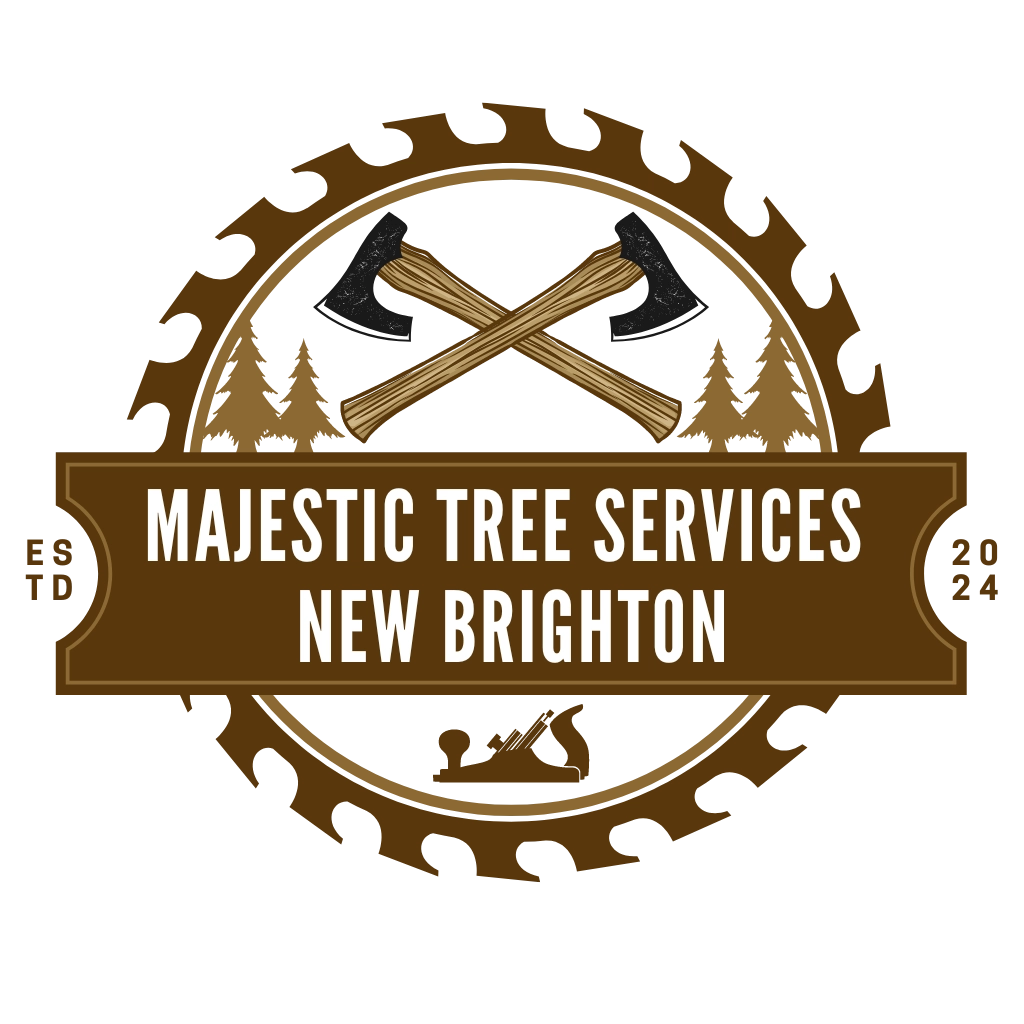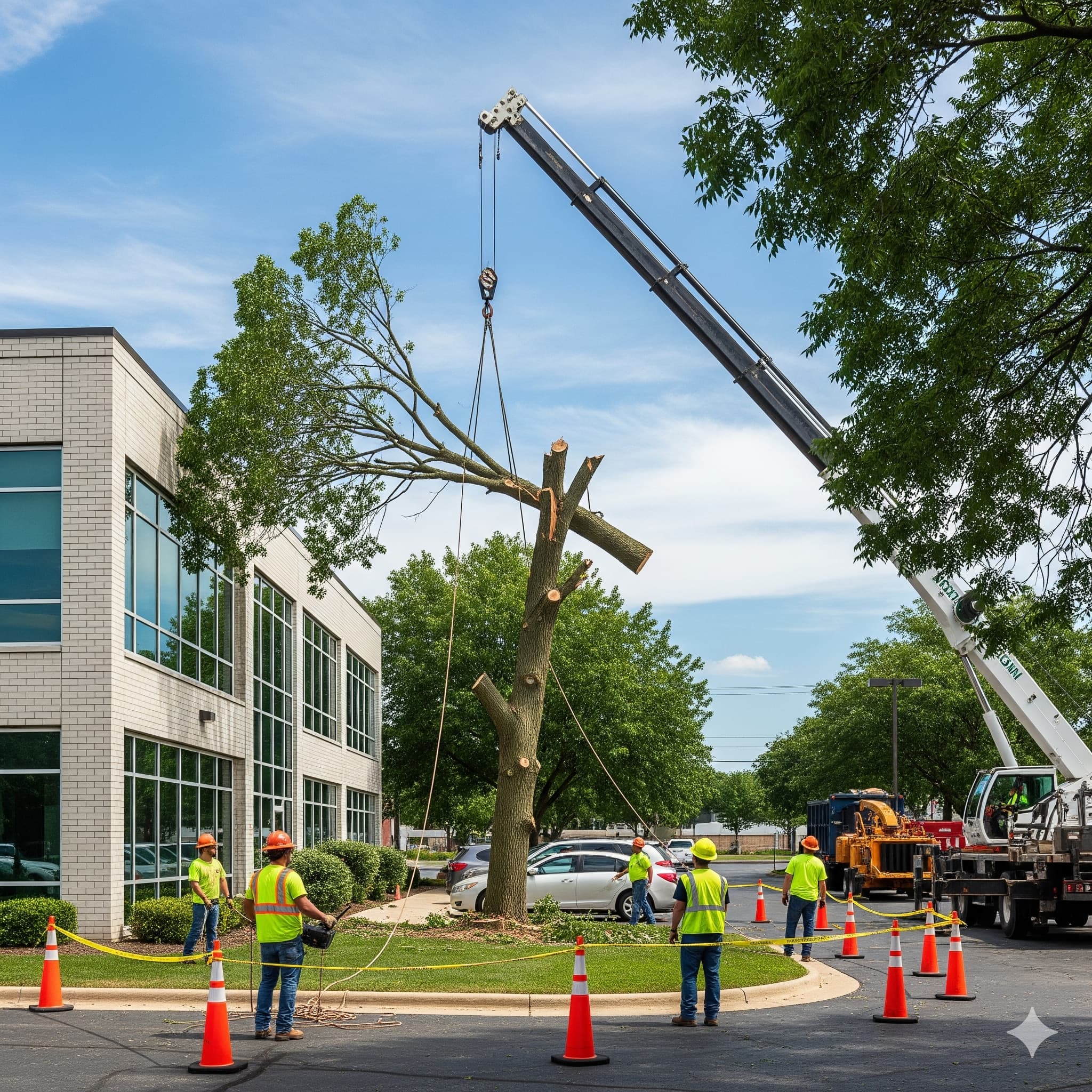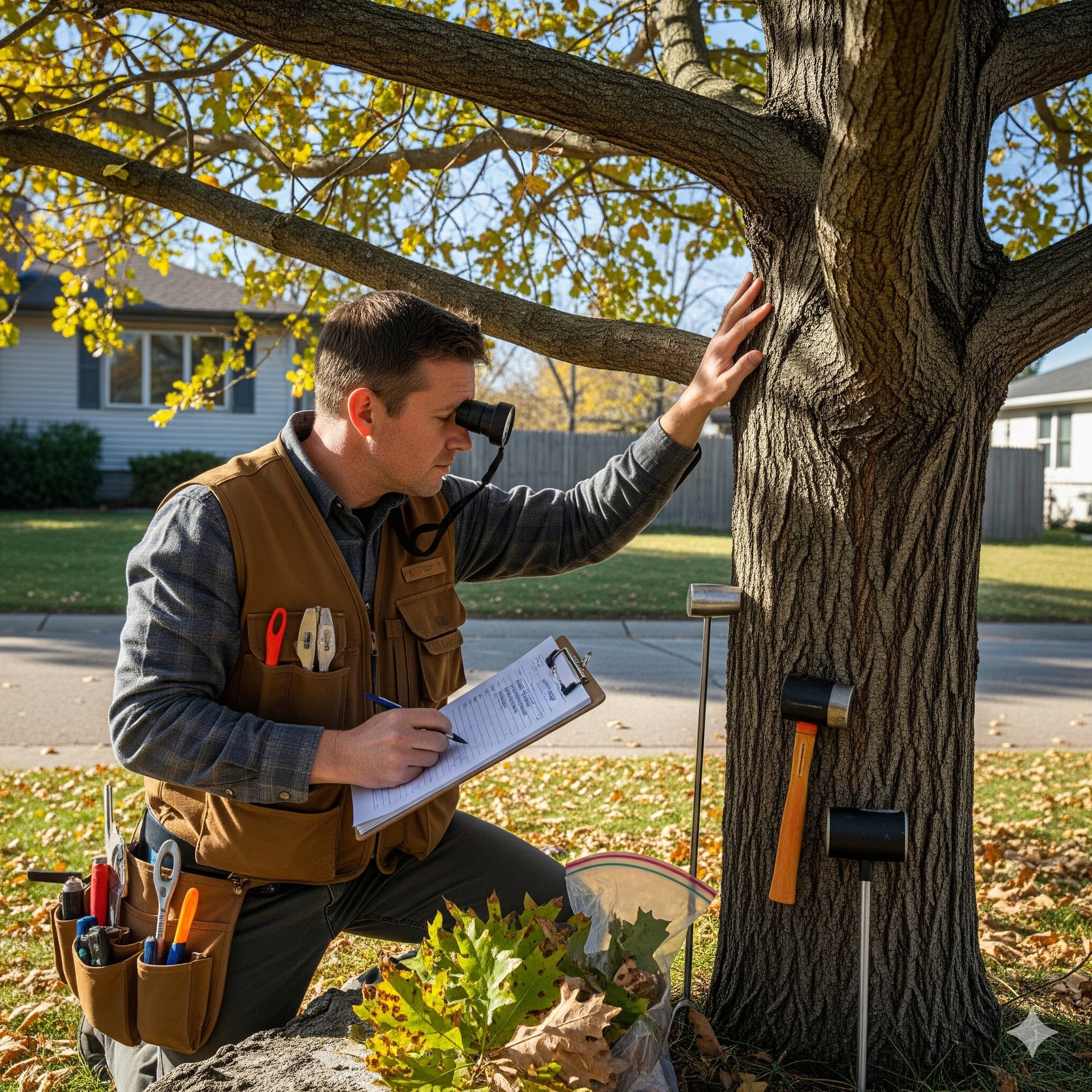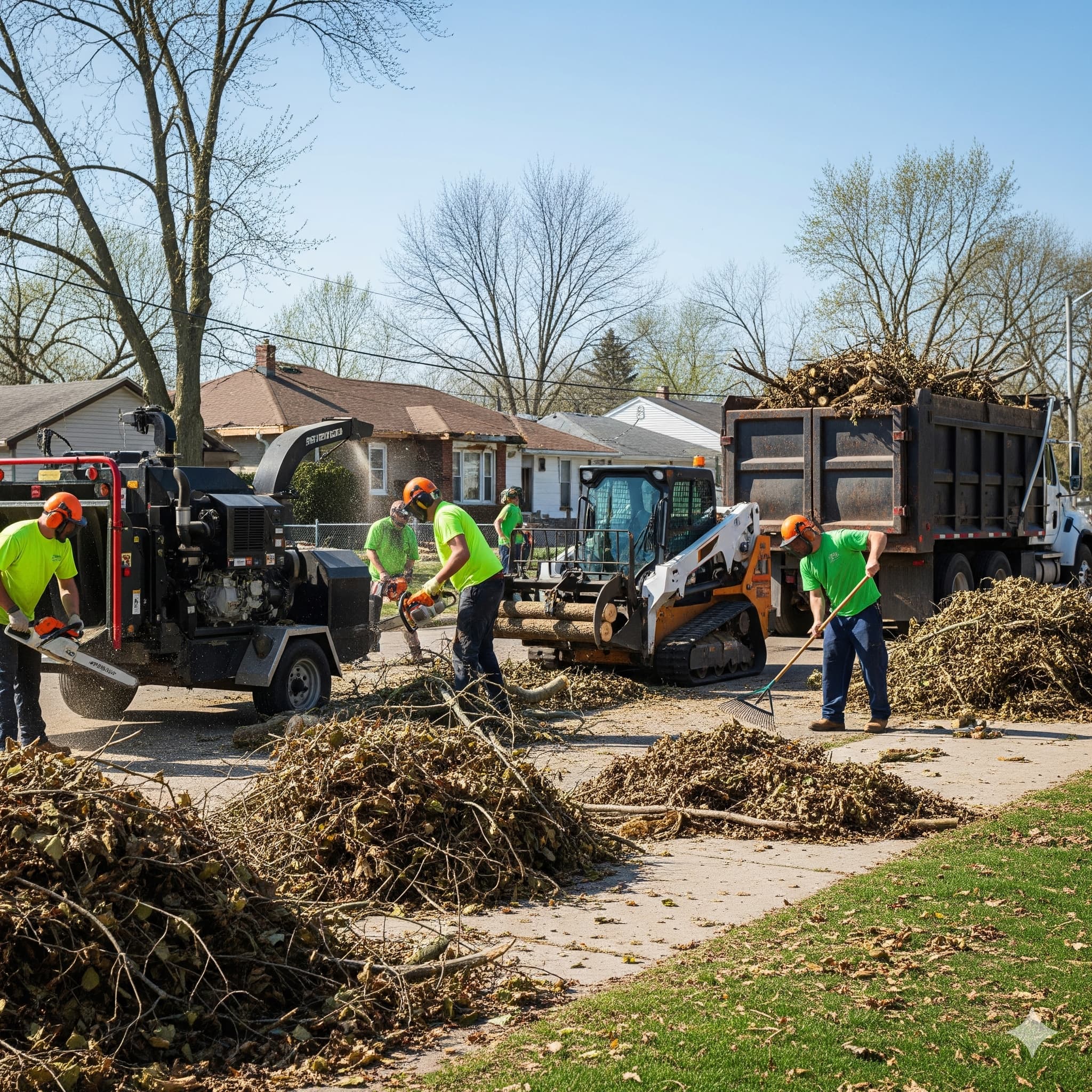
Key Warning Signs Arborists Spot in a Tree Health Assessment
Tree Health Assessment New Brighton
Professional tree health assessment reveals critical warning signs that untrained eyes often miss, helping protect valuable trees throughout New Brighton, Minnesota. At Majestic Tree Services New Brighton, our certified arborists conduct comprehensive health evaluations that identify problems before they become serious, serving properties from the mature oak groves near Long Lake Regional Park to residential areas throughout the Silver Lake neighborhood.
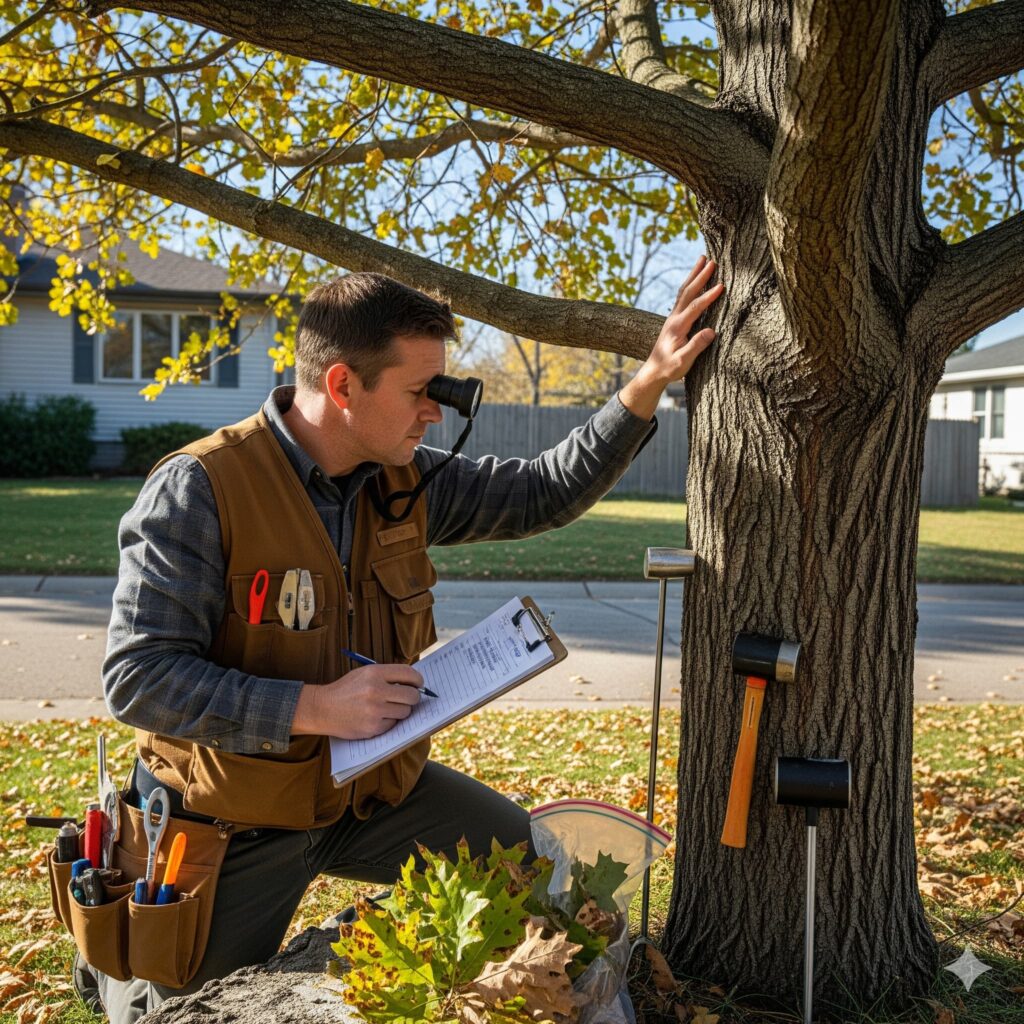
Understanding Professional Tree Health Assessment
Tree health assessment involves a systematic evaluation of multiple factors, including structural integrity, disease presence, pest activity, environmental stress, and growth patterns. Professional arborists use established protocols and specialized knowledge to identify subtle warning signs that indicate declining health or developing problems.
In New Brighton’s diverse urban forest, where trees face multiple stress factors, including climate extremes, soil limitations, and human activity impacts, a professional health assessment becomes essential for maintaining valuable tree resources and preventing safety hazards.
Crown and Foliage Warning Signs
Leaf Discoloration and Abnormal Patterns
Experienced arborists recognize subtle leaf color changes that indicate disease, nutrient deficiencies, or environmental stress. Premature yellowing, browning from leaf margins, or unusual spotting patterns often signal developing health problems requiring attention.
Seasonal timing of color changes provides important diagnostic information. Leaves changing color or dropping before normal autumn timing may indicate root problems, disease issues, or environmental stress affecting tree health.
Crown Density and Dieback
Progressive thinning of the tree crown or branch dieback starting from the tips indicates various health problems, including root damage, disease progression, or environmental stress. Arborists evaluate crown density changes over time to assess overall tree vitality.
Crown dieback patterns help identify specific problems. Top-down dieback may indicate root issues, while random branch death throughout the crown suggests different disease or stress factors.
Abnormal Growth Patterns
Professional assessment identifies abnormal growth patterns, including excessive sprouting, unusual branch development, or growth rate changes that indicate underlying health problems. These subtle signs often appear before obvious symptoms develop.
Epicormic sprouting (shoots growing from the trunk or main branches) frequently indicates tree stress and declining health, requiring professional evaluation to determine underlying causes and appropriate treatments.
Structural Warning Signs
Trunk and Bark Abnormalities
Trained arborists identify trunk problems, including bark abnormalities, canker development, and structural defects that threaten tree stability. These problems may not be obvious to property owners but indicate serious health issues requiring attention.
Bark changes, including unusual coloration, texture changes, or areas of missing bark, may indicate disease, insect activity, or mechanical damage affecting tree health and structural integrity.
Root System Problems
Root problems are often invisible but cause serious tree health issues. Professional assessment identifies surface root problems, soil condition issues, and signs of underground root damage that affect tree stability and health.
Visible root problems, including girdling roots, root damage, or soil level changes around trees, indicate potentially serious health issues requiring professional intervention to prevent tree decline or failure.
Branch Structure Defects
Structural defects in branch architecture, including co-dominant stems, included bark, and weak branch unions, create both health and safety concerns. Professional assessment identifies these defects and evaluates their significance for long-term tree management.
Branch attachment problems may not be immediately dangerous but can lead to progressive tree decline or sudden failure, making early identification and appropriate management essential.
Disease Detection and Identification
Fungal Disease Signs
Professional arborists recognize early signs of fungal diseases, including oak wilt, Dutch elm disease, and other serious conditions common in New Brighton. Early detection allows for treatment options that may not be available once diseases progress.
Subtle disease symptoms, including minor leaf spotting, unusual bark characteristics, or slight growth changes, may indicate developing disease problems requiring immediate attention and professional treatment.
Bacterial and Viral Infections
Bacterial and viral tree diseases present different symptoms from fungal infections, requiring specialized knowledge for accurate identification. Professional assessment distinguishes between different disease types to ensure appropriate treatment recommendations.
Disease progression patterns help arborists identify specific pathogens and develop effective management strategies before diseases reach advanced stages where treatment options become limited.
Pest and Insect Activity
Early Infestation Signs
Professional assessment identifies early signs of pest infestations, including Emerald Ash Borer, bark beetles, and other insects affecting New Brighton trees. Early detection allows for treatment options that prevent serious damage or tree death.
Subtle infestation signs, including small holes, sawdust accumulation, or slight changes in bark appearance, may indicate developing pest problems requiring immediate professional attention.
Secondary Damage Assessment
Insect damage often creates opportunities for secondary problems, including disease infections or structural weakness. A professional assessment evaluates both primary pest damage and potential secondary problems requiring management.
Understanding relationships between pest activity and tree health helps arborists develop comprehensive management strategies that address immediate problems while preventing future complications.
